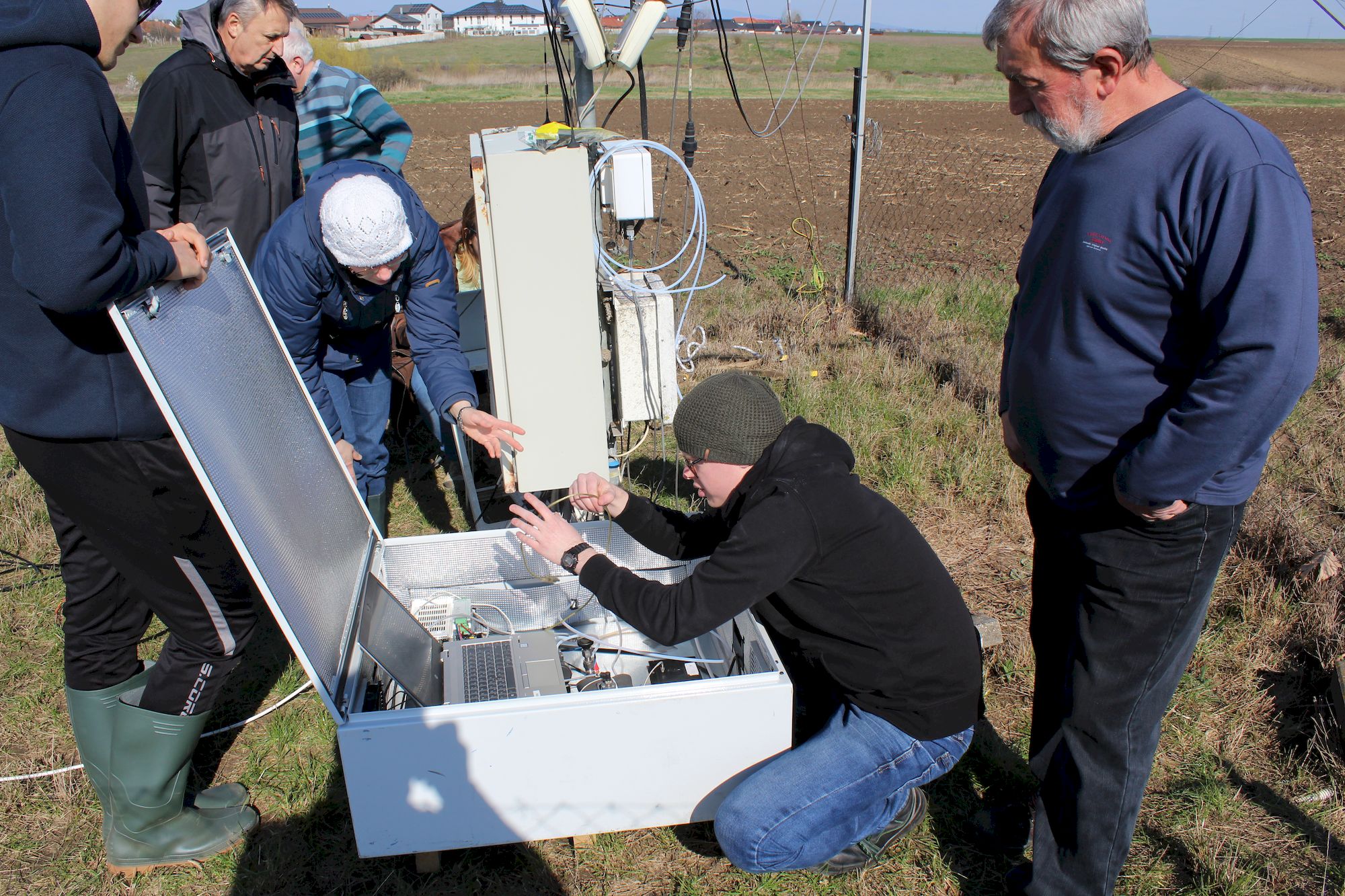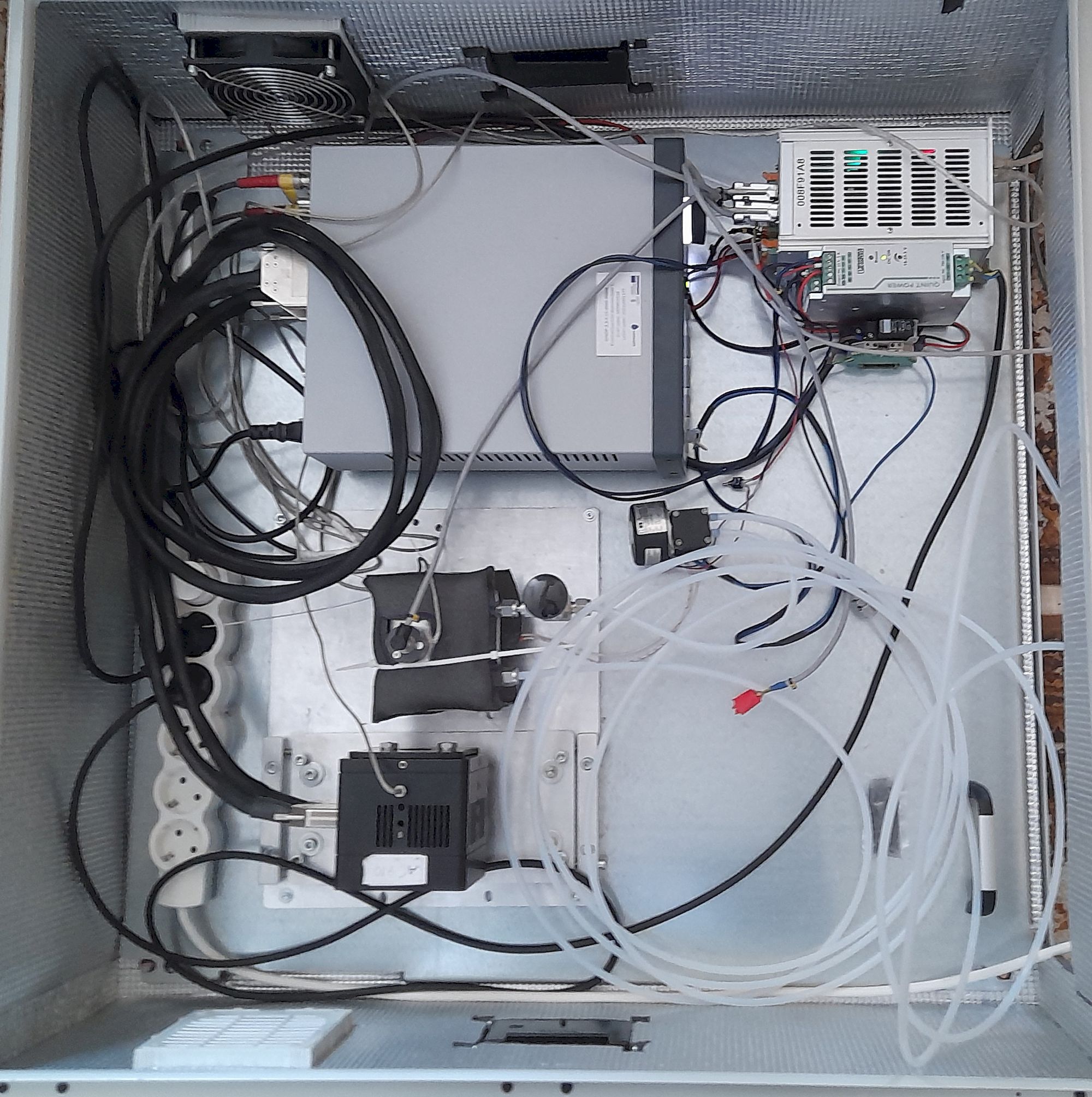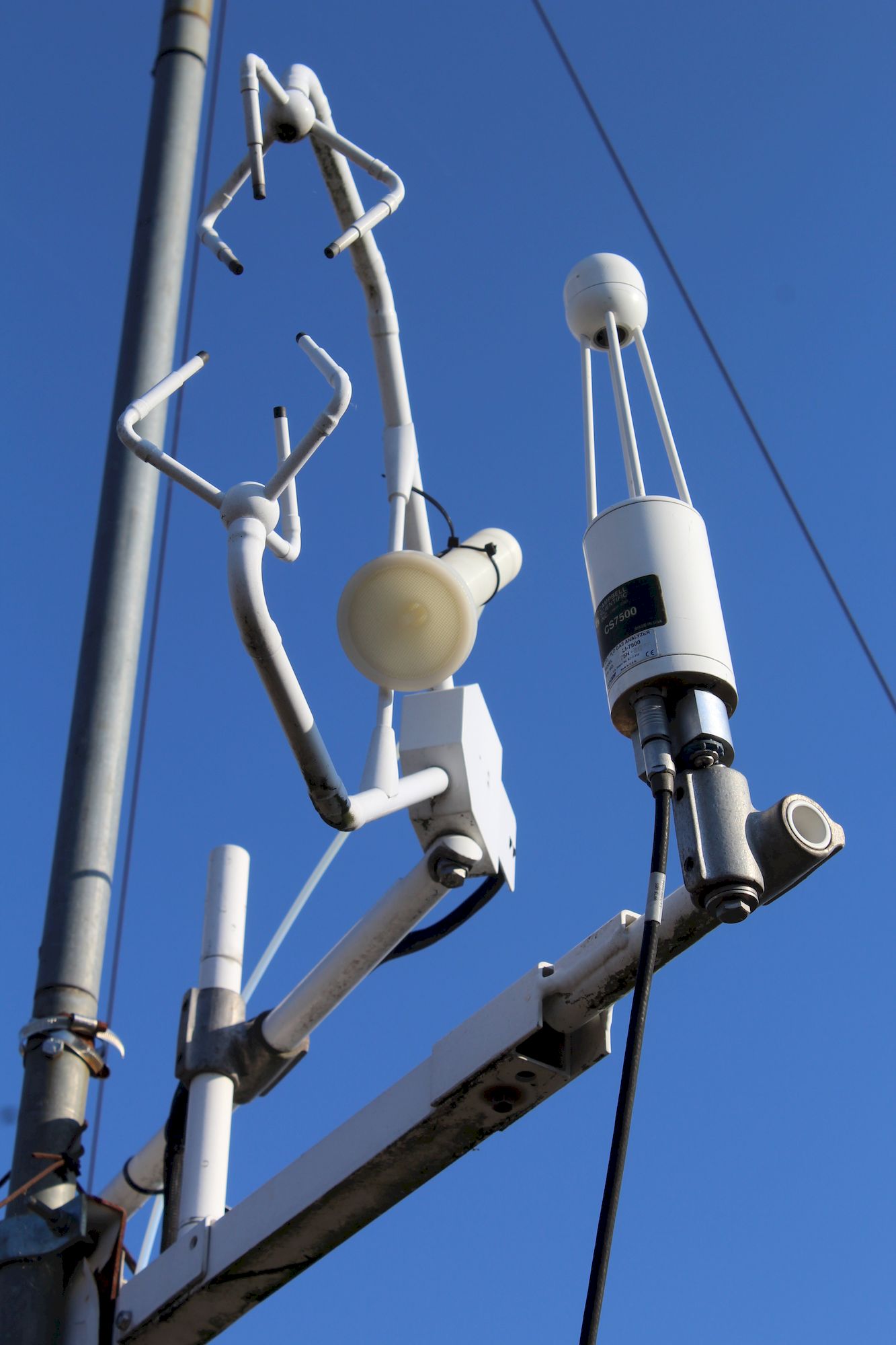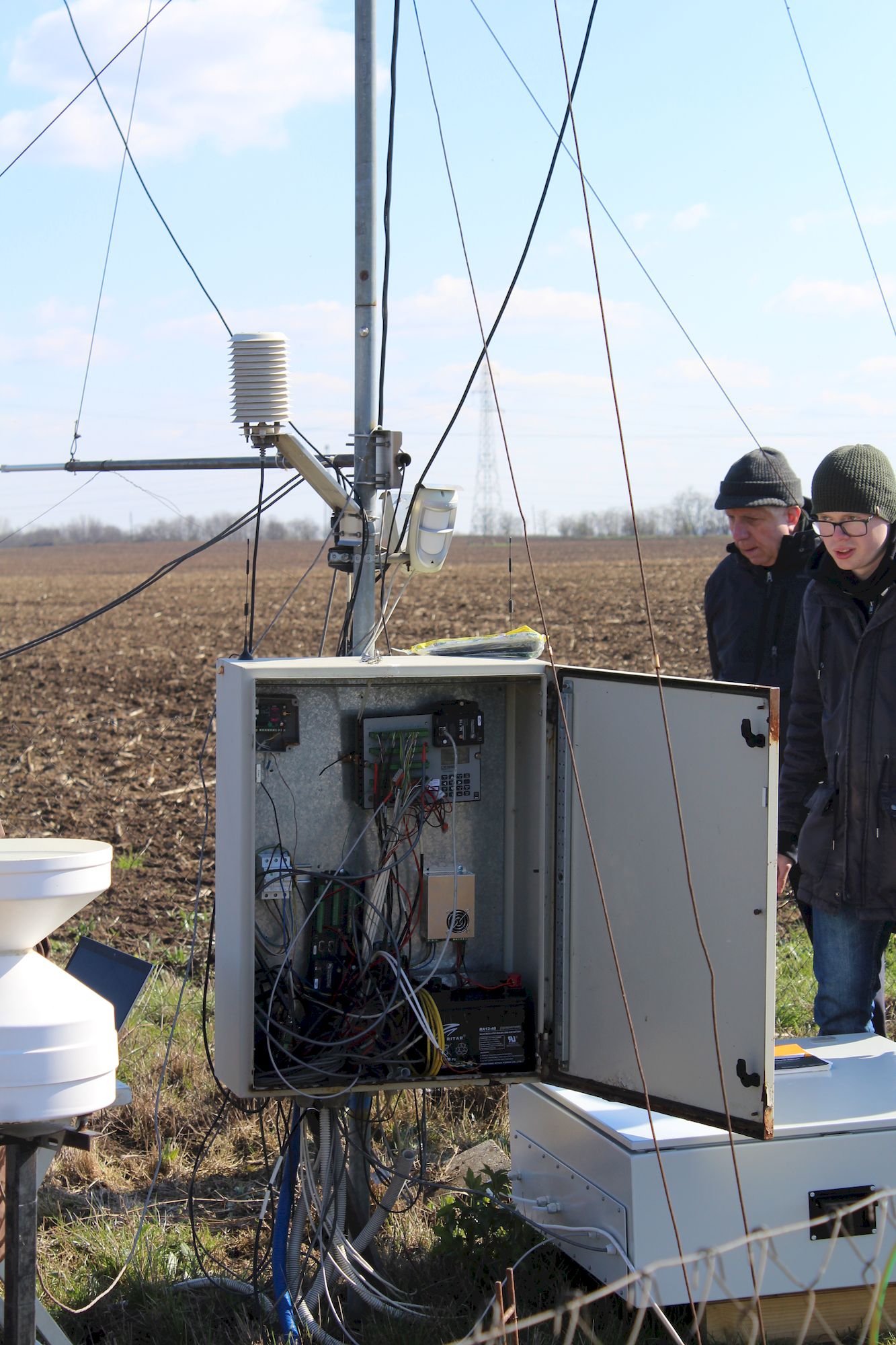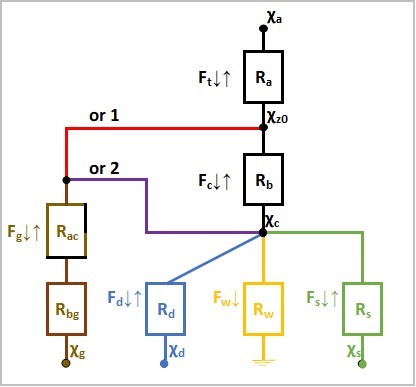Half of the applied fertilizers are not used globally and instead pollute the environment. Determining the degree of loss, which is crucial for prevention, is accomplished using models validated by measurements. For validation, knowledge of the concentration (χa) measured above the crop with the photoacoustic method is essential. In this regard, a summary article was published in which we described the models applicable to fertilized fields. We model material flux in the soil-plant-atmosphere system – specifically, the bi-directional exchange of ammonia – using an electrotechnical analogy. The ammonia flux (F), or current, is determined by the ratio of the concentration difference (Δχ) between two media and the resistance to exchange (R). The article discusses in detail the model concepts and the parameterizations of concentrations and resistances. Ammonia emitted by the soil is either directly released into the atmosphere (red line) or partly taken up by vegetation, i.e. recycled (purple line). The aim of our study is not only to measure and model ammonia loss, but also to determine rate of recycling.
